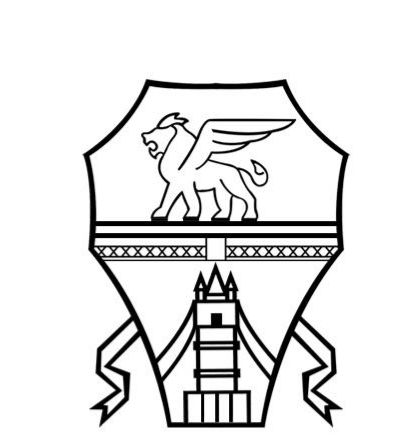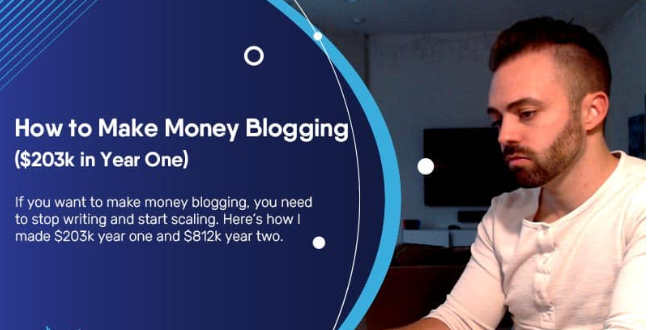Have you decided to build your WordPress site?
Great idea, but before you start, I recommend that you carefully read this article in which I have collected well 100 things to know before building your website!
I have collected everything you need to know to avoid mistakes that could waste your time and money, so that you have a clear idea not only of all the steps to be taken for the creation of your site, but also to realize what they are the priorities to consider, the tools you will need and which long-term aspects need to be considered from the outset.
This list is the result of our experience on SOS WP, both in the development and maintenance of each website, and in the assistance we offer you every day.
We have collected your most frequently asked questions and the most useful tips regarding building a site, security, what SEO is and how it works and all aspects of an online business.
For example, it’s not enough to know that you need a domain and hosting in order to install WordPress.
You also need to consider what features your hosting must have to allow you to create a secure and fast site.
Or again, it is good that you know how to create an email account with your domain and which addresses you will need right away.
Knowing a few secrets about your site’s security, performance improvement, and optimization will also help you avoid having to redo much of the work or fix future errors.
Thanks to this list, you will then be able to see a little further and your project will be a success!
Surely this guide will help you, but I suggest you also consult our page of online courses for creating and managing a website .
100 things to know before creating your website or blog in WordPress
The best platforms to create a blog are …

- There are many platforms ( WordPress , Blogger , Prestashop , etc.). Examine their features and choose the one that best suits your project.
- If you decide to use WordPress, there are two versions: .org and .com. At SOS WP we always talk about .org, because it is the most powerful and flexible option, which allows you to create a truly professional site.
- Many free platforms (including the .com version of WordPress) prevent the insertion of advertisements.
- Choose a platform that allows the use of a custom domain.
- There are completely free platforms (such as Blogger ), platforms with a monthly or annual subscription (such as WordPress.com premium version and SquareSpace ) and free platforms, which however require the purchase of other separate services (such as WordPress.org , which requires a hosting to be installed).
The best hosting for WordPress are …
- If you choose to create your website with WordPress (version .org) you will need to subscribe to a hosting service .
- Hostings are of various types: shared hosting is the best choice for those starting out. Currently, the best hosting for WordPress (and others) are Serverplan and SiteGround . See how to install WordPress with just one click on these excellent providers.
- cPanel is the most popular and simple control panel for managing your server.
- Most shared hosting are available in two versions: with Linux or Windows operating system – in 90% of cases the best choice is Linux.
- Choose a hosting service that offers guided installation applications for WordPress and other platforms.
- When choosing a hosting plan, check if the domain is included in the price.
- Often, hosting providers offer technical support for relocating the site from the old provider, if you already have a website.
- Many providers include credits to advertise and purchase images in their hosting plans.
- It is possible to have a site at one provider and the domain at another.
- WordPress has some technical requirements . Before signing up for a hosting plan, contact customer support to verify that the service supports WordPress.
- The best WordPress hosting providers must have great customer service.
- Hosting plans can be purchased with a monthly, yearly, two-year plan, etc.
Domain and Subdomain …
- In addition to the hosting plan, to create a site with WordPress you will need to purchase a domain .
- The domain extensions (.com, org, .net, .it, etc.) currently available are about 300.
- It is best to choose a top level domain (in English, top level domains or TLD ) that is easy to remember.
- There are generic top-level domains (.com; .edu; .org;…) and national (.it; .fr, .br…).
- Subdomains (such as subdomain.domain.com ) can be created for free.
- The name and contact details of the domain owners are publicly available. By purchasing a .com, however, you can request the Whois Privacy from your provider to keep them hidden.
- It is always best to choose a domain that is short, easy to remember and descriptive .
- At the time of purchase, register the domain for at least 3 years and activate the automatic renewal.
- Any domain can be configured to “point” to another site.
- The transition of domains from one registrar to another is subject to restrictions, for example, there is a minimum period of time (often 60 days) from the moment of registration before a domain can be transferred.
- Before buying a domain, search the web for Facebook, Twitter, Ebay, YouTube, etc. profiles that use the same name and that could be mistakenly associated with your site.
How to create and manage emails …

- When you sign up for a hosting plan, most hosting providers allow you to create email addresses associated with your domain.
- Make sure you have a generic email, such as info@example.com , that users can use to request information.
- If you download mail to your PC with mail clients such as Outlook or Thunderbird, you can use them with your mail associated with the domain.
- Using Google Apps for Business, you will be able to use your new email address in Gmail.
What are the features of WordPress …
- Using WordPress, you can add functionality to your website by installing Plugins .
- To create your website in multiple languages, you will need to use a plugin like WPML .
If you want to create a site with eCommerce functionality, the best WordPress plugin is WooCommerce , which you can learn how to use by following the WooCommerce module of our WordPress course . - If you have few products to sell, you may not need to set up an eCommerce. You could start by using the PayPal buttons .
- If you need to manage bookings and appointments, you can do it from your site using WordPress plugins .
- All sites should have a newsletter subscription form . I recommend you to use MailChimp or MailPoet .
- WordPress allows you to protect pages and sections of the site with passwords. Only logged in users will be able to visit them.
- WordPress can be used to create forums. The plugin to install is BuddyPress .
- Before creatiIf you have few products to sell, you may not need to set up an eCommerce. You could start by using the PayPal buttons .ng a forum, ask yourself if you will have the time to manage subscriptions, monitor conversations, etc.
- Using WordPress, you can create a blog network using the “Multisite” feature . But, if you change your mind, you can always make one of the sites on the network independent by switching from a multisite to a single site .
- WordPress themes often have features already included. Always check which ones are and if you want to add more, check that the necessary plugins are compatible with the theme you choose.
- It is not necessary to implement all the features right away; sometimes it is better to launch a basic version of the site and add new features progressively.
How to choose the best look and theme for your blog …
- After choosing the features of your site and before proceeding with the implementation, create mockups of your pages. A great tool is Moqups .
- The sites that adapt to the screen of all PCs, tablets and smartphones are called “Responsive”.
- In most cases, websites with a simple and intuitive design are more effective than very complex ones.
- To create your website, I advise you not to use more than two or three colors (besides white and black).
- Website graphics may vary depending on the browser used ( Google Chrome , Internet Explorer , Safari , etc.). Test all browsers before launching your site.
- It is best not to use more than two fonts on the site.
- The graphics of a website built with WordPress are defined in a file called style.css (to edit this file, you need to have knowledge of CSS ).
- Most of the images and illustrations you find on the web are protected by copyright and cannot be reproduced without explicit consent.
- If you want to license images, there are several sites where you can find photos for your site .
- There are free and paid (premium) WordPress themes. In most cases, I recommend using premium themes .
- The best site to find premium WordPress templates is Themeforest .
- If you want to use a free theme, choose one of those available on the official WordPress site.
- You won’t have to use your chosen theme forever; you can change the graphics of your site without losing posts and other content.
How to manage the security of your blog …
- The first step in securing your WordPress site is NOT to use “Admin” as the username for the administrator account.
- The most popular tool for limiting SPAM on your WordPress site is Akismet .
- Be careful to protect your email address as well. It is possible to block SPAM on WordPress sites .
- NEVER post personal information online such as your address, date of birth, etc.
- Set an alarm to remind you to change your website and all your online accounts and profiles regularly .
- If you are creating an online store or a site that involves the processing of payments and the collection of sensitive data of your users, you will need to have an SSL (Secure Socket Layer) certificate . This can be purchased from all major hosting providers.
- Using the administrator account, you can create individual profiles for people (programmers, friends, etc.) that will help you create your website. Once the job is done, you can delete the profiles.
- Before creating your website, think about how to make backups and how to restore them in case something goes wrong.
How to manage performance & maintenance …
- Shared hosting plans are great for getting started. When the traffic on your site increases, you can eventually upgrade the plan, to have it more suited to new needs.
- The WordPress updates are released regularly. Always keep your WordPress site updated to the latest version available.
- Plugins and themes will also need to be updated regularly; this guarantees a good level of performance and safety.
- Don’t install too many plugins – the more tools you install, the slower your site will be, so keep only the essential ones.
- To test the speed of your website, you can use the free Google PageSpeed tool .
- To reduce the loading time of your website, I recommend using caching tools.
- If you want to create a site with lots of images, optimize the file size using one of the many online and offline tools. So you won’t slow down the loading of pages.
- When a user tries to visit a page on your site that doesn’t exist, the Error 404 screen appears . Most of the newer WordPress themes allow you to create custom content for this page.
How to position the blog on search engines …
- Creating your website will be just the beginning of your online business: to get a site on the first page on search engines you will need to learn how to optimize it.
- In order for Pages must be indexed in order to appear in search results .
- Before creating your website, choose an SEO-optimized WordPress theme: its code has already been designed to be easily read by search engines.
- Post frequently to get high rankings on Google and other search engines. Add new content two or three times a week, or rather, every day.
- Pages must be indexed in order to appear in search results .
- SEO experts agree that Google does not index pages with content less than 350 words (there are no official rules, however).
- Adding your website to directories and buying links are outdated and harmful techniques .
- Search engines take into account social signals (i.e. links, visits and interactions from social networks). Create a profile on all major social platforms and post a link on your website.
- The positioning on Google is determined by constantly evolving algorithms. Make sure you are always up to date on the latest SEO news (find several helpful guides in our SEO section ).
- One of the factors that Google takes into account is the time users spend on your pages.
- Google also looks at the number of inbound links (from quality sites).
- To monitor the performance of your site, you can use Google Analytics .
- To report your site to Google and monitor any visibility issues, you’ll need to create an account on Search Console .
- The absolute best plugin to take care of the SEO of your WordPress site is Yoast SEO .
- If you run a local business, be sure to keep your Google+, Yelp, and Foursquare profiles up to date.
- It is not recommended to publish text in different languages on the same page. Rather, use a plugin to create multilingual sites, as indicated in point 35.
Other various tips to become famous bloggers …
- Quite often, developers don’t update WordPress themes. Choose a template used by at least 5000 people.
- Likewise, many plugins are not updated. Use only those downloaded at least 1,000 times .
- If you choose a quality theme and plugin, you can contact the developers directly for support.
- WordPress codes are fully customizable.
- To customize WordPress codes you will need to know CSS , HTML and PHP. You will be able to implement effects in WordPress using JavaScript codes.
- If you decide to create your website on WordPress, you will be able to integrate video pages and posts from YouTube, Vimeo, audio tracks from SoundCloud, etc.
- Realistically, running a blog takes at least 5 hours of work per week.
- If you need help managing your website, you can find tons of freelancers on platforms like upWork .
- To date, there are nearly two billion websites.
- WordPress is available in many languages, including Italian.
- WordPress is used by over 60 million people.
Conclusion
We have reached the end of this roundup on 100 things to know before building your website.
Do you think this list will be useful to you?




